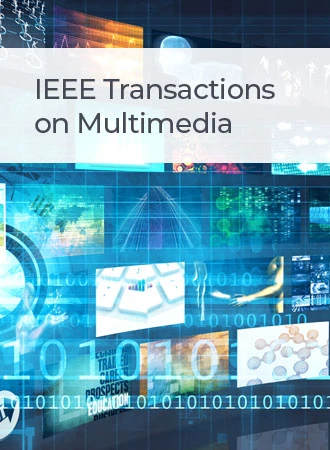面向感知的无监督域自适应无参考图像质量评估
IF 8.4
1区 计算机科学
Q1 COMPUTER SCIENCE, INFORMATION SYSTEMS
引用次数: 0
摘要
深度神经网络(DNNs)在无参考图像质量评估(NR-IQA)中显示出巨大的潜力。然而,NR-IQA的标注劳动强度大,耗时长,严重限制了其应用,特别是对真实图像的标注。为了减轻对质量标注的依赖,一些研究将无监督域自适应(UDA)应用于NR-IQA。然而,上述方法忽略了一个事实,即分类中使用的对齐空间不是最优的,因为该空间没有为感知精心设计。为了解决这一挑战,我们提出了一种有效的面向感知的无监督域自适应方法StyleAM (Style Alignment and Mixup),该方法将足够的知识从富含标签的源域数据转移到无标签的目标域图像。具体来说,我们发现了一个更紧凑、更可靠的空间,即面向感知的UDA的特征风格空间,这是基于一个有趣的观察,即dnn中深层的特征风格(即均值和方差)与NR-IQA中的质量分数完全相关。因此,我们建议将源域和目标域对齐在一个更面向感知的空间中,即特征样式空间,以减少其他与质量无关的特征因素的干预。此外,为了提高质量分数与其特征风格之间的一致性(即有序/连续特征),我们还提出了一种新的特征增强策略style Mixup,该策略将最后一层dnn之前的特征风格(即均值和方差)混合在一起,并混合它们的标签。在许多跨域设置(例如,合成到真实,多个失真到一个失真)上的大量实验结果已经证明了我们提出的StyleAM在NR-IQA上的有效性。本文章由计算机程序翻译,如有差异,请以英文原文为准。
StyleAM: Perception-Oriented Unsupervised Domain Adaption for No-Reference Image Quality Assessment
Deep neural networks (DNNs) have shown great potential in no-reference image quality assessment (NR-IQA). However, the annotation of NR-IQA is labor-intensive and time-consuming, which severely limits its application, especially for authentic images. To relieve the dependence on quality annotation, some works have applied unsupervised domain adaptation (UDA) to NR-IQA. However, the above methods ignore the fact that the alignment space used in classification is sub-optimal, since the space is not elaborately designed for perception. To solve this challenge, we propose an effective perception-oriented unsupervised domain adaptation method StyleAM (Style Alignment and Mixup) for NR-IQA, which transfers sufficient knowledge from label-rich source domain data to label-free target domain images. Specifically, we find a more compact and reliable space i.e., feature style space for perception-oriented UDA based on an interesting observation, that the feature style (i.e., the mean and variance) of the deep layer in DNNs is exactly associated with the quality score in NR-IQA. Therefore, we propose to align the source and target domains in a more perceptual-oriented space i.e., the feature style space, to reduce the intervention from other quality-irrelevant feature factors. Furthermore, to increase the consistency (i.e., ordinal/continuous characteristics) between quality score and its feature style, we also propose a novel feature augmentation strategy Style Mixup, which mixes the feature styles (i.e., the mean and variance) before the last layer of DNNs together with mixing their labels. Extensive experimental results on many cross-domain settings (e.g., synthetic to authentic, and multiple distortions to one distortion) have demonstrated the effectiveness of our proposed StyleAM on NR-IQA.
求助全文
通过发布文献求助,成功后即可免费获取论文全文。
去求助
来源期刊

IEEE Transactions on Multimedia
工程技术-电信学
CiteScore
11.70
自引率
11.00%
发文量
576
审稿时长
5.5 months
期刊介绍:
The IEEE Transactions on Multimedia delves into diverse aspects of multimedia technology and applications, covering circuits, networking, signal processing, systems, software, and systems integration. The scope aligns with the Fields of Interest of the sponsors, ensuring a comprehensive exploration of research in multimedia.
 求助内容:
求助内容: 应助结果提醒方式:
应助结果提醒方式:


